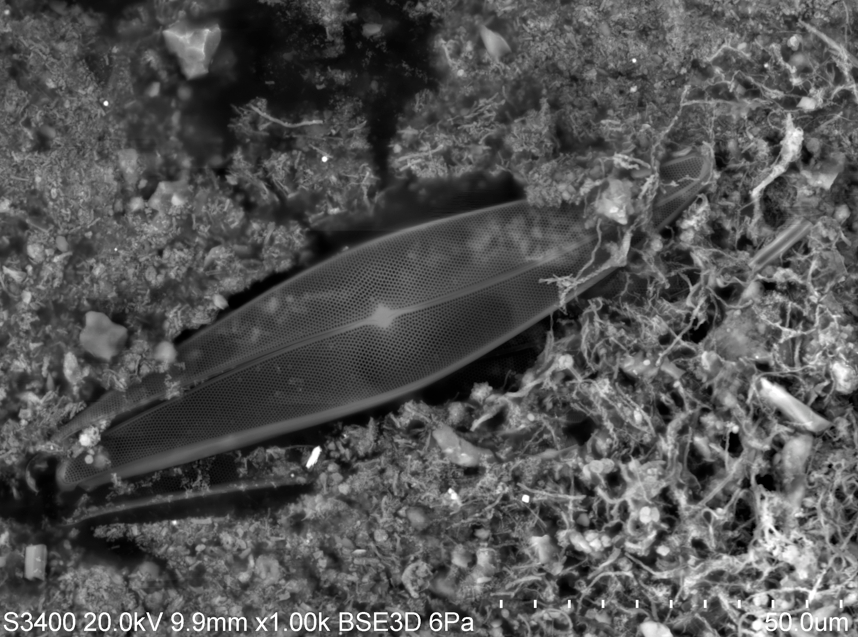By Catherine Drake, Invertebrate Zoology Lab
Sedimentation is the process by which particles sink and accumulate on the seafloor. Layers upon layers of these settled materials tell the story of the oceans and climate from which they originated. Alterations to these sediments from compaction, bioturbation, and microbial respiration form sedimentary rocks through an action termed diagenesis. A better comprehension of diagenesis is needed to translate the sedimentary record into clues that help explain past events. To better understand these processes, students at MLML take the MS 274 “Advanced Topics in Oceanography” course. This class, taught by Dr. Ivano Aiello and Dr. Kenneth Coale, examines the factors that affect sedimentation and subsequent diagenesis in Monterey Bay.
A major driver of sedimentation is the ocean “biological pump.” This is the fixation of carbon by phytoplankton and the subsequent transport of plankton debris to depth. Over time, these materials undergo diagenesis as more sediments are deposited and compacted or consumed and disturbed by organisms. The process of diagenesis mimics many of the same processes as we observe in a compost pile, but occurs much slower.
To study which organisms drive the biological pump in Monterey Bay, the MS 274 class constructed sediment traps. To build the array, we first mastered the technique of splicing rope together. This rope held our sediment traps to a mooring approximately 30 feet above the seafloor to ensure that the traps would be suspended in the water column. On top of the array, we fastened a surface float to aid in recovery. The purpose of the array was to catch fresh material that we could compare to materials in cores from the seafloor at the same location.


On September 24, 2012, we boarded the R/V John H. Martin and set a course for a location in Monterey Bay that was approximately 60 feet deep and deployed our sediment trap array. Then, two weeks later on October 8, 2012, we again set off aboard the R/V John H. Martin and collected the samples to begin our investigation into the process of sedimentation in the Monterey Bay.

This involved many hours of sitting at multiple microscopes and quantifying the type of particles we saw; now, these microscopes that we used aren’t your average dissecting scope. Instead, to get a better depiction of the composition of each sample, we used two specialized types: petrographic and scanning electron microscopes. These specialized scopes gave us better resolution when trying to identify and quantify the lithogenic (of rock origin) and biogenic (of biological origin) particles in our samples.


Now remember that processes such as compaction, bioturbation, and respiration form sedimentary rocks through diagenesis. Due to a strong current system in Monterey Bay, we hypothesized that biogenic substances would be transported offshore and thus would not be present in a shallow, high energy, depositional environment, even though they are present in the water column. In contrast, it was hypothesized that lithogenic particles would be dense enough to deposit in a turbulent coastal environment.
We actually found that there was a higher percentage of lithogenics in both the sediment traps and the cores. For the two weeks that the sediment traps were deployed, dredging was occurring in the Moss Landing harbor, making the water very turbid. So, we suggest that this could be a possible explanation for the high percentage of minerals in the sediment trap sample. Overall, we learned that Monterey Bay, with its submarine canyon and turbulent waters, is a very unique system when observing the processes of sedimentation and early diagenesis!

